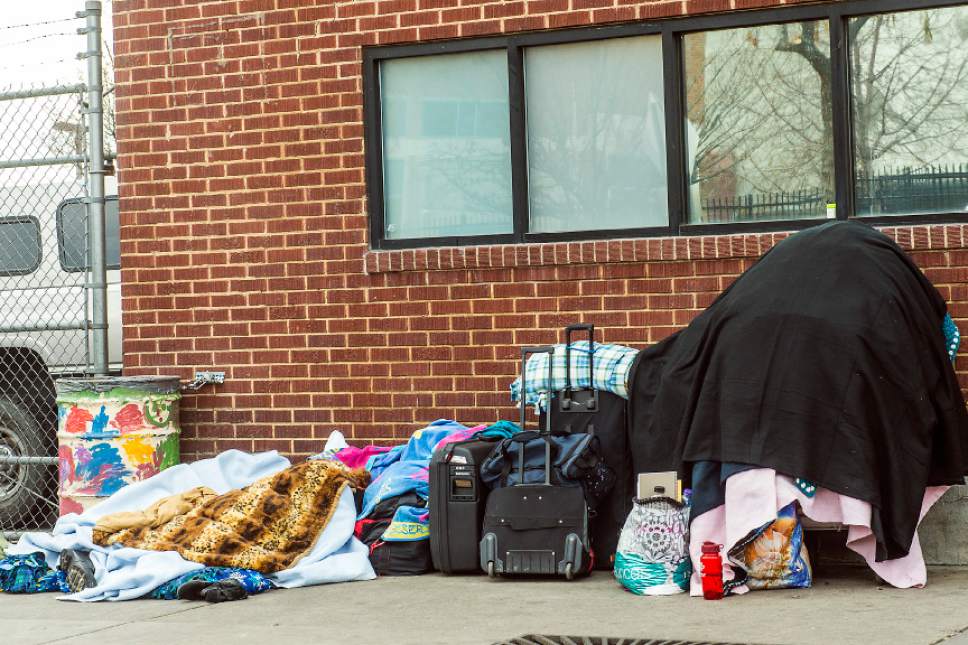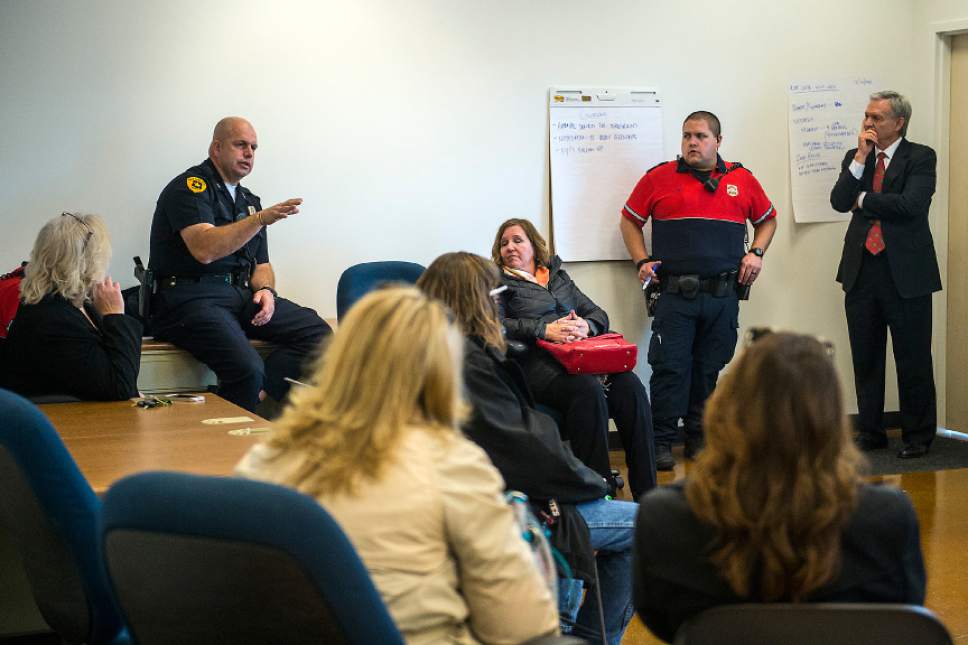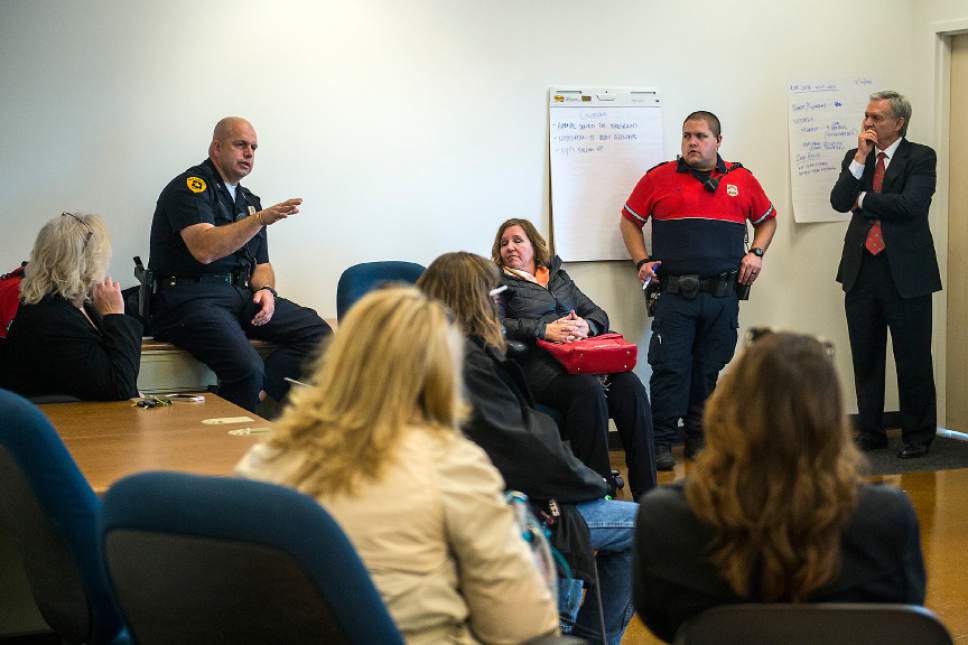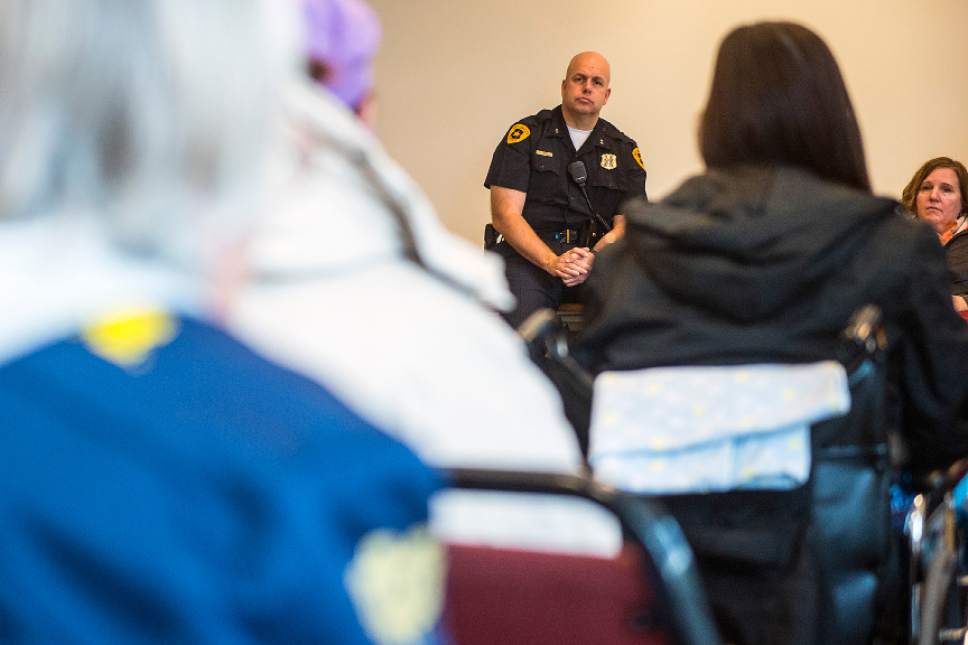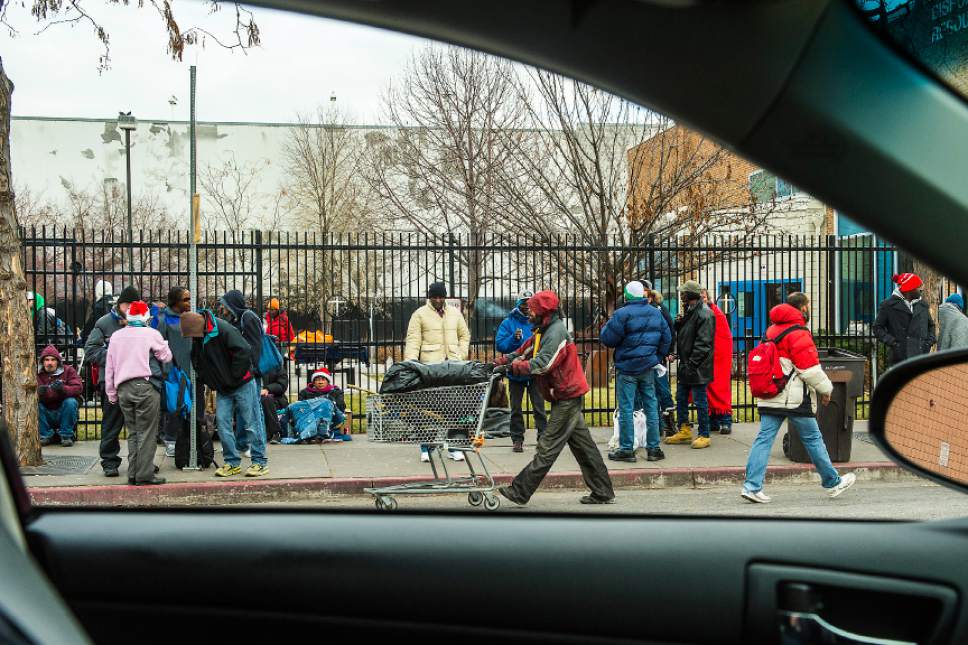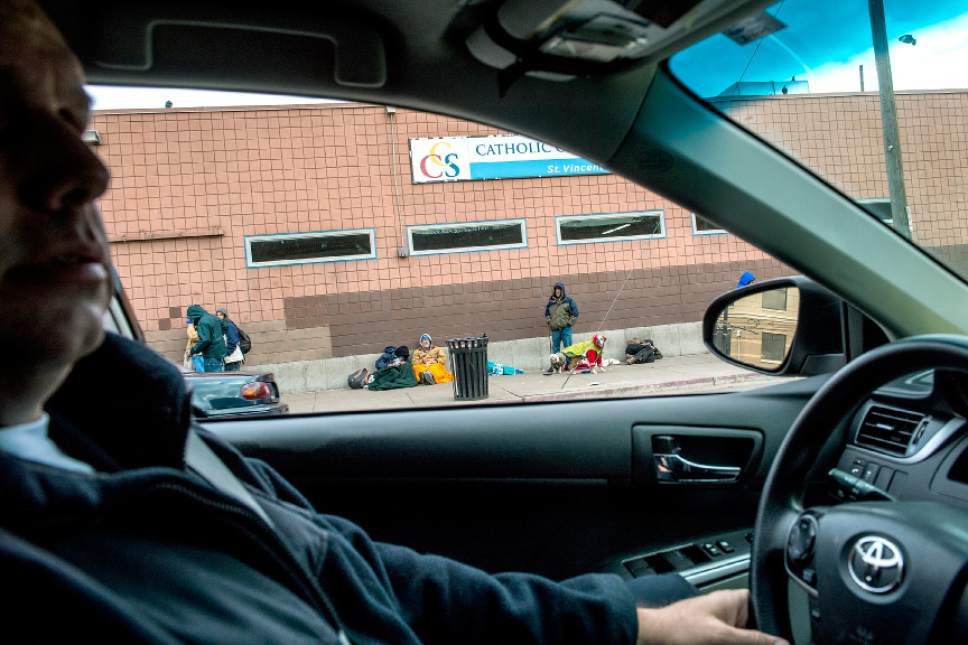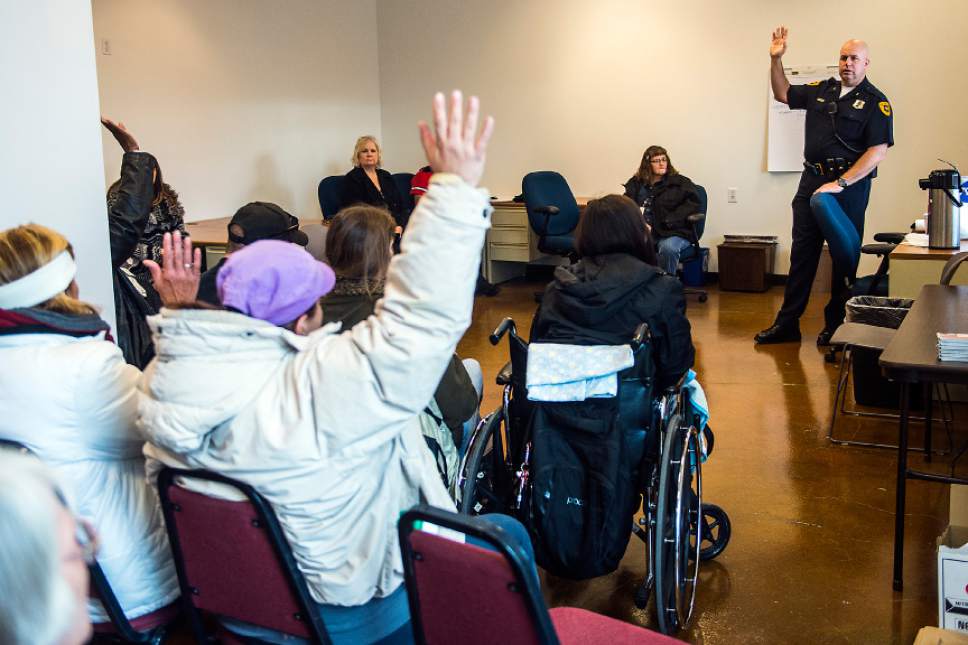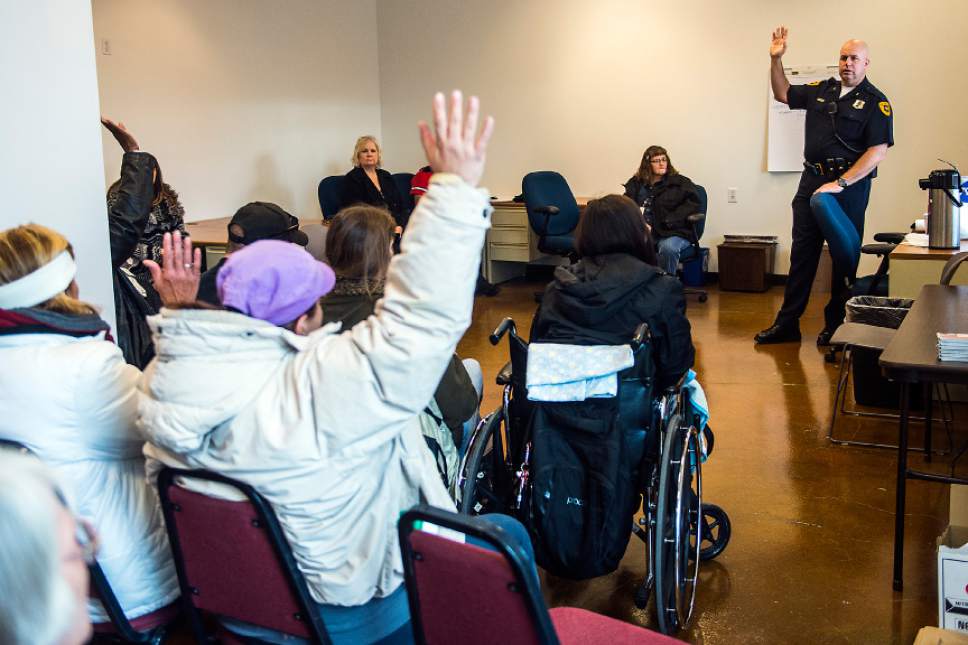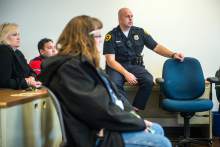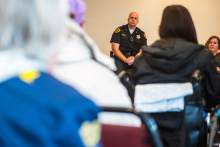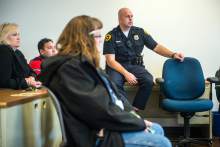This is an archived article that was published on sltrib.com in 2014, and information in the article may be outdated. It is provided only for personal research purposes and may not be reprinted.
While standing in line at The Road Home shelter to get a bed for the night, Bryson Garbett saw at least 40 illegal drug deals go down in two hours.
The main dealer was called "Chewy." Whenever he was approached by a prospective buyer, he would pull out a small black baggie of crack or a small white baggie of heroin.
"He wasn't worried about getting caught," said Garbett, who was approached numerous times by passers-by selling a quick fix. "The drug dealers control the area. The police are there and can be effective when they show a presence, but the dealers just intermingle with the homeless to stay hidden."
Garbett, a developer, posed as a homeless person for three days to check out the environment in the area where the lost and forgotten congregate between Salt Lake City's 200 South and 400 South from 400 West to 500 West.
He left his wallet and identification home, took TRAX train downtown and lived among the homeless.
Garbett's adventure came after several banks turned down financing for high-rise residential units he wants to build south of Pioneer Park. The banks, he said, did not want to risk investing because of the homeless hordes.
"I saw everything down there," he said of his 72 hours on the streets. "Every type of crime imaginable. There were drug deals, prostitution, right there in broad daylight."
That was in September. Since then, the Salt Lake City Police Department ramped up its efforts to clean up the area and help the homeless find better lives.
Officers erected a temporary fence near the curb on 500 West where men congregate to wait for The Road Home's doors to open at 10 a.m. Once inside, they stake out a bed for the night by throwing their sleeping bags or whatever gear they possess on one of the cots.
Before the fence's arrival, drug dealers could hide among the masses around dirt mounds several yards from the street. Crowds of homeless men waiting for beds acted as shields for the illegal transactions.
Police also closed a northbound section of 500 West at night to curtail the movement of the criminals and limit parking on Rio Grande Street, near the women and family shelter, to prevent loitering.
"Move on, gentlemen," Deputy Chief Fred Ross shouted to a group of men lingering near a building across the street from the Rio Grande Cafe. "You can't stay here. You've got to move on."
It's a never-ending battle, Ross tells me, noting the challenge of sifting the criminal element from the innocent homeless whom the dealers exploit and use for cover.
As soon as he scattered the men, he stopped in front of the family shelter to chat with a man and his wife in a wheelchair. The man was ecstatic. It looked like he was getting a job, thanks to the efforts of Ross and other officers providing assistance in the area.
Ross heads the Police Department's Metro Support Bureau, which assigns 87 officers to the downtown area, particularly the blocks where the homeless hang out.
"The number one priority is to keep the people and the businesses down here safe," he told me on a recent morning when I rode around with him. But the officers also help the homeless tap the social services needed to escape this dreariness.
In short, the cops fight crime and deliver hope.
For instance, the department has arranged for EnergySolutions Arena to hire homeless men and women for janitorial and food-services work. Ross said the department also is trying to line up temporary jobs at area hotels.
As we walked back to Ross' car, a woman sitting in the back seat of another patrol car rolled down the window and gave him a thumbs-up. The cop was taking her to a driver license office to get an ID card, a requirement for employment.
The department works with Catholic Community Services, whose Weigand Homeless Resource Center is across the street from the family shelter. There, the homeless can use computers for online access and track down relatives around the country.
If loved ones will take them in, the police work with Greyhound for deeply discounted bus tickets to take them where they need to go, Ross said.
"I'm on my way to Atlanta," a woman shouted at Ross. "Thank you for that. I've got some money, my medication. I've got everything I need. I'm leaving tonight."
The Weigand Center provides a variety of daytime services, including a library and a community room, where movies are shown on a flat-screen TV. It also offers job counseling, food stamps, a laundry, medical and grooming supplies, showers and a barber, who volunteers his services one day a week.
The center even boasts of its own courtroom, where a justice court judge handles misdemeanors for three hours every other Friday.
Across the courtyard is the St. Vincent de Paul Dining Hall, where a small staff, aided by dozens of volunteers, provides about 600 lunches and dinners a day.
The staff creates well-balanced meals from mostly donated food, said St. Vincent de Paul cook Jeff Bailey, a certified culinary expert. "We make sure these meals are nutritious. They always have fruits and vegetables with the main course."
The Wiegand Center and St. Vincent are administered by Dennis Kelsch, a former Catholic priest, and Gina Lopez, an ex-nun.
"Some of them know just how much they need to drink to get in here," Kelsch said.
Between stops to check on the homeless standing outside the centers and clearing out congregations of suspicious-looking men, Ross and I stopped by the Fourth Street Clinic, just down the street, to drop off a $2,500 donation from the Salt Lake City Police Foundation.
The clinic, a federally funded community health center, provides medical and dental services, said Communications Director Jennifer Hyvonen. It serves about 4,200 individuals and has about 25,000 visits a year.
Ross also is trying to bring to the area several state agencies, including the Department of Workforce Services and the Driver License Division, and put them under one roof. Both have a limited presence now, but Ross is lobbying for a full-service office open during business hours five days a week.
The nearby Gateway mall has donated office space on 200 South for weekly informational meetings for the homeless. Women meet there on Tuesdays, men Thursdays. Support officers discuss how to stay safe and how to access resources, housing and jobs.
Much has happened since Garbett's undercover foray in September. He finally secured financing from U.S. Bank to build his high-rise. A commission has been formed to study moving the homeless campus to another location.
Garbett, along with former state Sen. Scott Howell, organized the Pioneer Park Coalition, consisting of area businesses, to craft solutions to clean up the area.
Howell and the coalition's executive director, Jonathan Harman, took a stroll in October around the shelter facilities.
They came across five or six men conducting some type of business on the street. Howell asked them if they were selling drugs. They nodded and continued their dealing.
"They seemed comfortable when they openly displayed the items they were exchanging between multiple hands," Harman wrote on Facebook. "One hand contained a pill bottle, another cash."
Howell and Harman also met an elderly man named "Frosty." He was from out of state, had cancer and had come to get something to eat and volunteer at Catholic Community Services.
While they chatted, a flashy Ford Mustang slowly circled the block, cruising, Harman surmised, for drug customers as a police siren blared a block away.
Yes, crime is all around. Yes, the police are all around. And, yes, the homeless are all around. Hope, it sometimes seems, is the only thing missing. prolly@sltrib.com —


